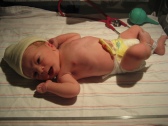Both dependent care and medical flexible spending accounts are funded with pre-tax deductions from your paycheck. Both have a “use or lose” policy if the funds deducted are not used in the calendar year for which the election was made.
Typically, a person can only make the election to have these deductions taken at the time of their hiring or during the annual enrollment period every company offers for their employees to make changes to their health and welfare benefits. (There are other times as well during certain “life events” such as marraige or birth of a child when benefit elections can also be changed.)
Since the election to make these deductions are made for a full year, one must be very cautious about the amount chosen. If you don’t use the funds towards eligible expenses in the time period allowed, you cannot get the money back.
For those with young children or elder parents needing day care, the dependent care FSA can be useful. The maximum amount that can be set aside is pegged at $5,000 each year. With the costs of child care and adult day care being what they are, it is not likely that an employee will end up not using the full amount set aside so maxing out makes sense.
However, the dependent care program only allows a person to receive funds already in their FSA account, regardless of how much the person has already paid out in dependent care expenses. For example, if a person elects the $5,000 maximum to be withdrawn over the course of the year, after 3 months there is only $1,250 in the account. Even though the person has already paid more than that to the child care provider, they can only receive the balance.
With the medical flexible spending account, however, a person can be reimbursed at any time during the year up to the annual
amount elected to have withdrawn. Thus, the person can receive funds from the FSA prior to the funds actually having been withdrawn from their paycheck.
Let’s assume you know you are going to have a surgical procedure in January and your cost will be about $5,000, so you elect to have $5,000 deducted towards the medical FSA during the open enrollment period. In February, you pay your $5,000 portion. Even though you have only about $800+ in your FSA account, you can submit a reimbursement claim for the full $5,000 that you paid out.
It is prudent to review what your expected medical expenses may be in the upcoming year, verify that they are eligible FSA expenses with your employer’s FSA administrator, and then make the election. It can’t hurt to underestimate, so you may have to pay some expenses with after tax dollars, but that’s still much better than giving away money because you overestimated and you lose what you had deducted and not used.
Some examples for using a medical FSA are when you incur orthodontia expenses and dental procedures for which you have a high deductible and/or co-pay. Regular doctor office visit co-pays, which are not usually exceptionally expensive, are eligible for FSA reimbursement. If you go often enough, even saving a few tax dollars can be beneficial.
Using the FSA is a great tool to enforce a disciplined savings program to cover expenses that are expected to be incurred anyway during the year. And by doing it through a tax-deferred program at work, you’re ultimately reducing the cost by your marginal income tax rate so that your savings stretch out to buy you more services. (For someone in the 20% marginal tax bracket, for example, one would have to earn $1.25 to have enough cash to pay for $1.00 of services after the impact of taxes.)
By taking some time to project your personal expenses, you can ultimately benefit with Uncle Sam’s help.














